The positions of long-term Bitcoin investors have remained rock solid despite the sharp decline on 7 September. Furthermore, we continue to see a deepening supply shock as the amount of BTC on exchanges steadily decreases.
The organic growth of the Bitcoin network is illustrated by the number of addresses holding different values of BTC, most of which increased during the recent decline. The on-chain data confirms that the recent large price move was mainly triggered by overleveraged derivatives traders.
BTC price action
Last week, Bitcoin reached a local peak at $52,956 just above the 0.618 Fib retracement level on September 7. On the same day, there was a flash crash that took the BTC price to a low at $42,900. One of the reasons for the 19% decline was the clearing of long leveraged positions, which experienced liquidations totaling $4 billion.
However, it is worth noting that the decline has served to validate the long-term area at the 0.382 Fib retracement as support. This area coincides with horizontal support levels and Bitcoin’s historic all-time high of January 8, 2021.
Investors buy during the crash
On-chain analytics data can help explain how investors behaved during the sharp decline. It turns out that many investors holding actual BTC did not show significant movements during the flash crash.
This was pointed out by on-chain analyst @, who said in a tweet that “leverage markets sold off but investor buying just got stronger”. Furthermore, he compared the recent fall to the crash caused by the COVID-19 crisis in March 2020. Woo stated:
“BTC flash crashes are caused by deleveraging, the COVID crash was similar in that derivatives overreacted, but back then it was supported by investors. This one was completely divergent and a mystery.”
This is supported by the on-chain analyst’s accompanying chart, which shows an intensifying supply shock on multiple levels: stock market outflows and short- and long-term investor positions. Woo concludes that the effect of the decline is merely “cheap coins”.
Bitcoin continues to drain from exchanges
Willy Woo’s observations are confirmed by another on-chain analyst @, who points to the 14-day Illiquid Supply Market Gradient indicator. It is used to estimate when long-term investors with strong hands are holding their positions more tightly than the price action indicates.
According to the analyst, “long-term investors were unshaken by the drop and actually increased their holdings”. This is confirmed by the divergence between the increase in investor positions and the drop in the BTC price and by the two orange bars at the bottom of the chart below.
The long-term outlook highlighted by all three of the aforementioned analysts is very much evident in the chart of the balance of Bitcoin held on cryptocurrency exchanges. It turns out that the amount of BTC on exchanges has been steadily declining since the COVID-19 crisis (red circle).
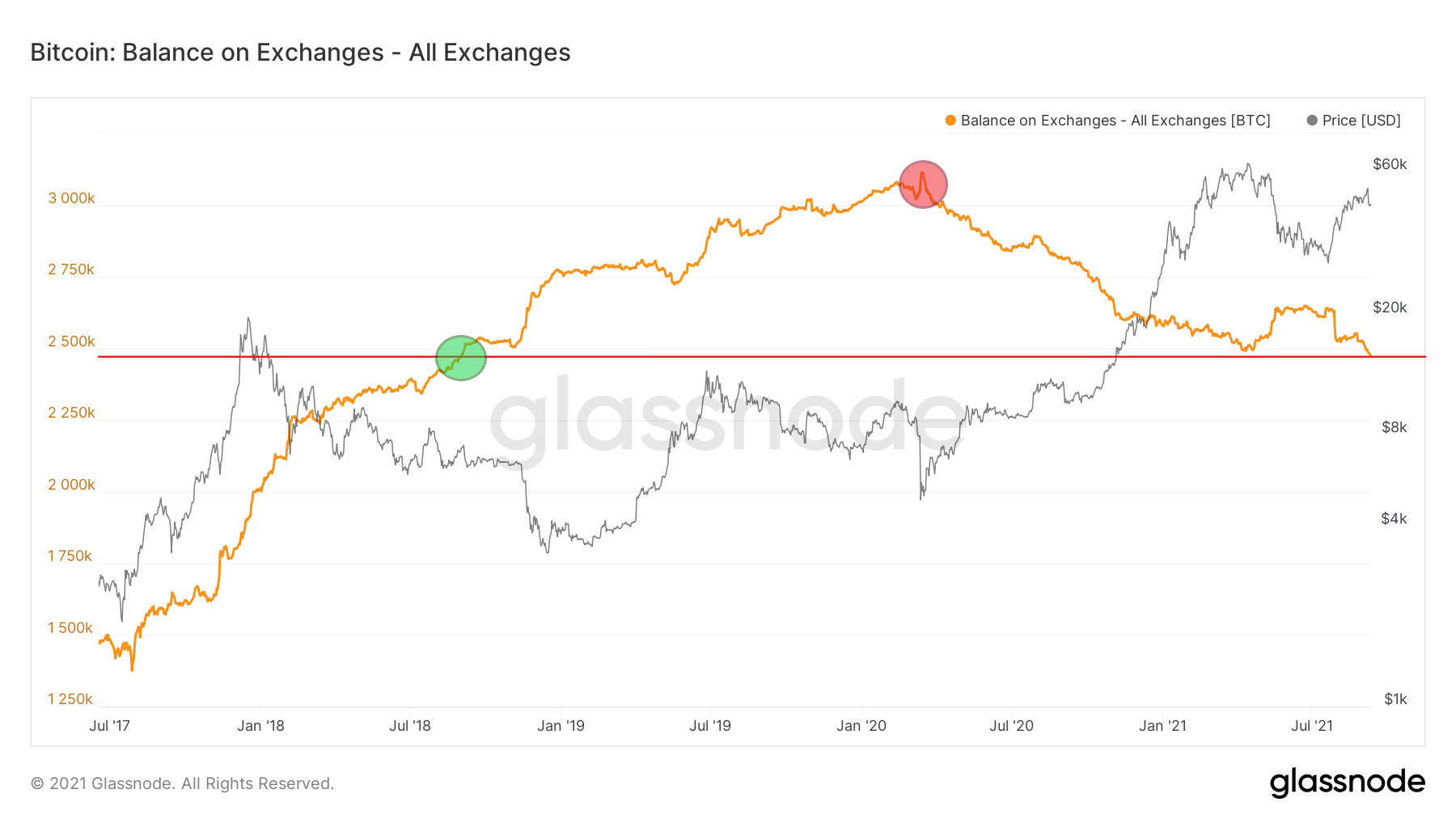
Small positions are growing
The last indicator worth noting in perspective of the recent decline is the number of addresses that hold different amounts of BTC. In the first group, there are 3 types of addresses with small amounts in the 0.01-1 BTC range.
Here we see a clear continuation of the upward movement (green rectangles) despite the drop in the Bitcoin price a few days ago (red rectangle). The number of small positions has been increasing since at least the middle of the May-July 2021 consolidation (orange arrow). The recent flash crash has only reinforced this trend.


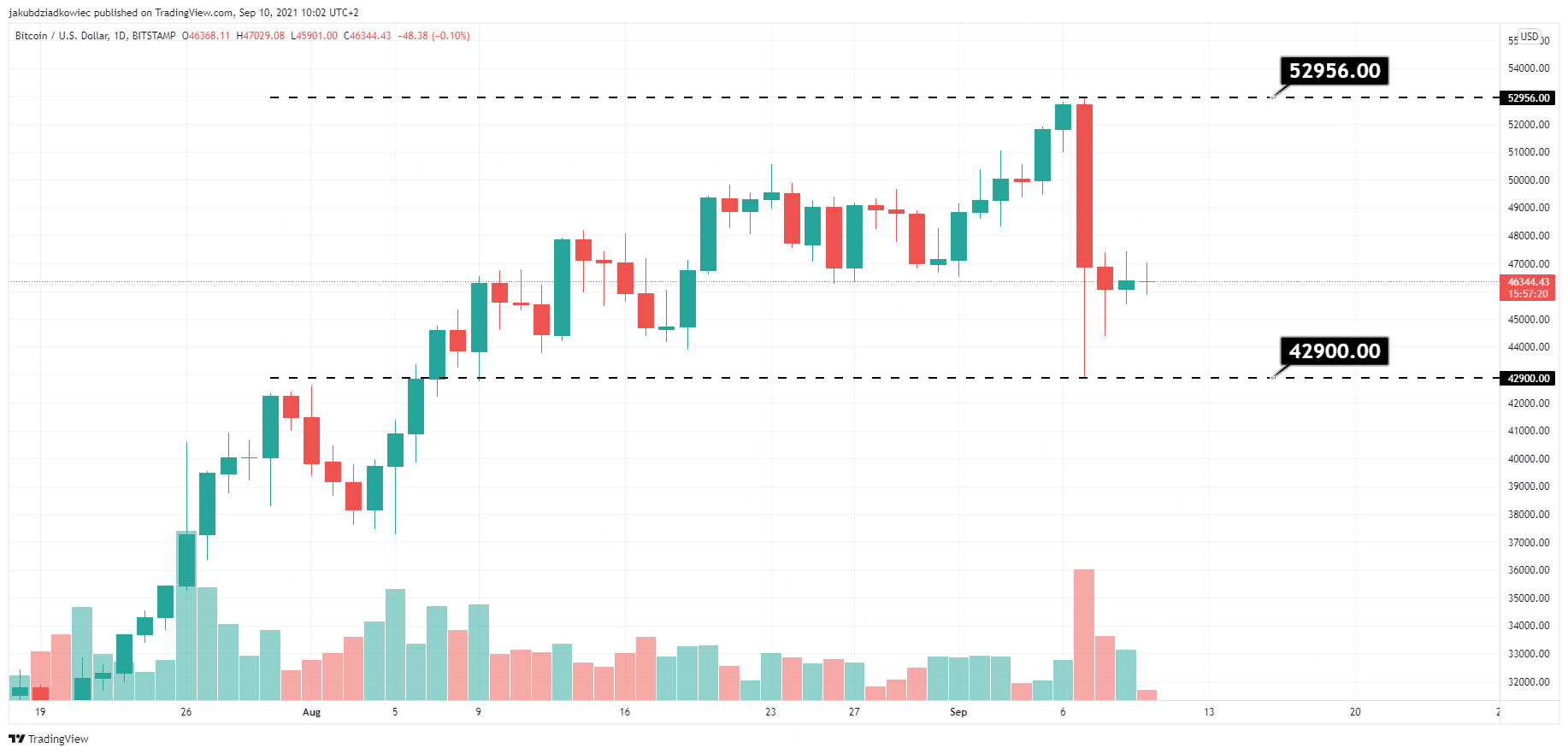

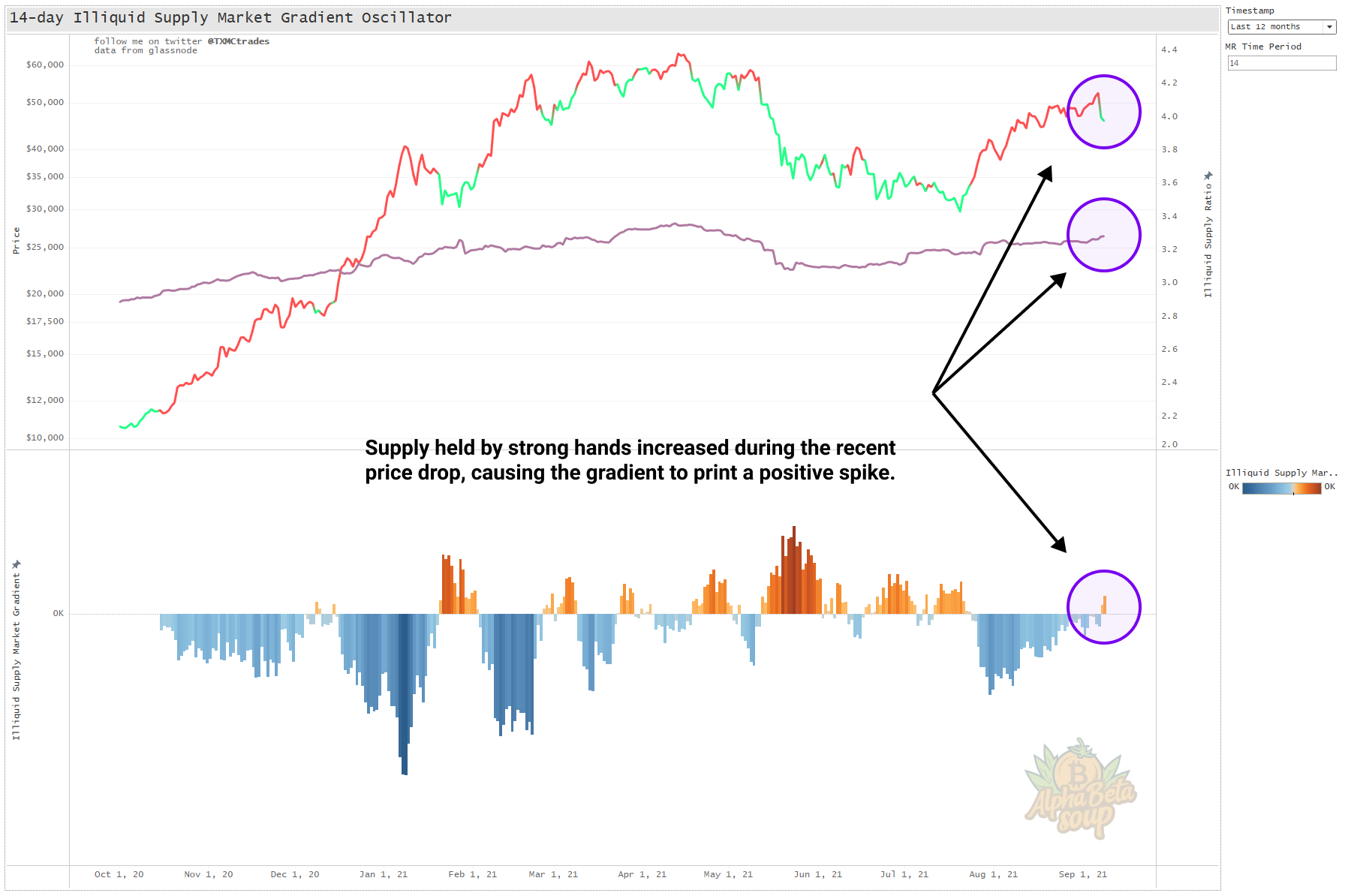
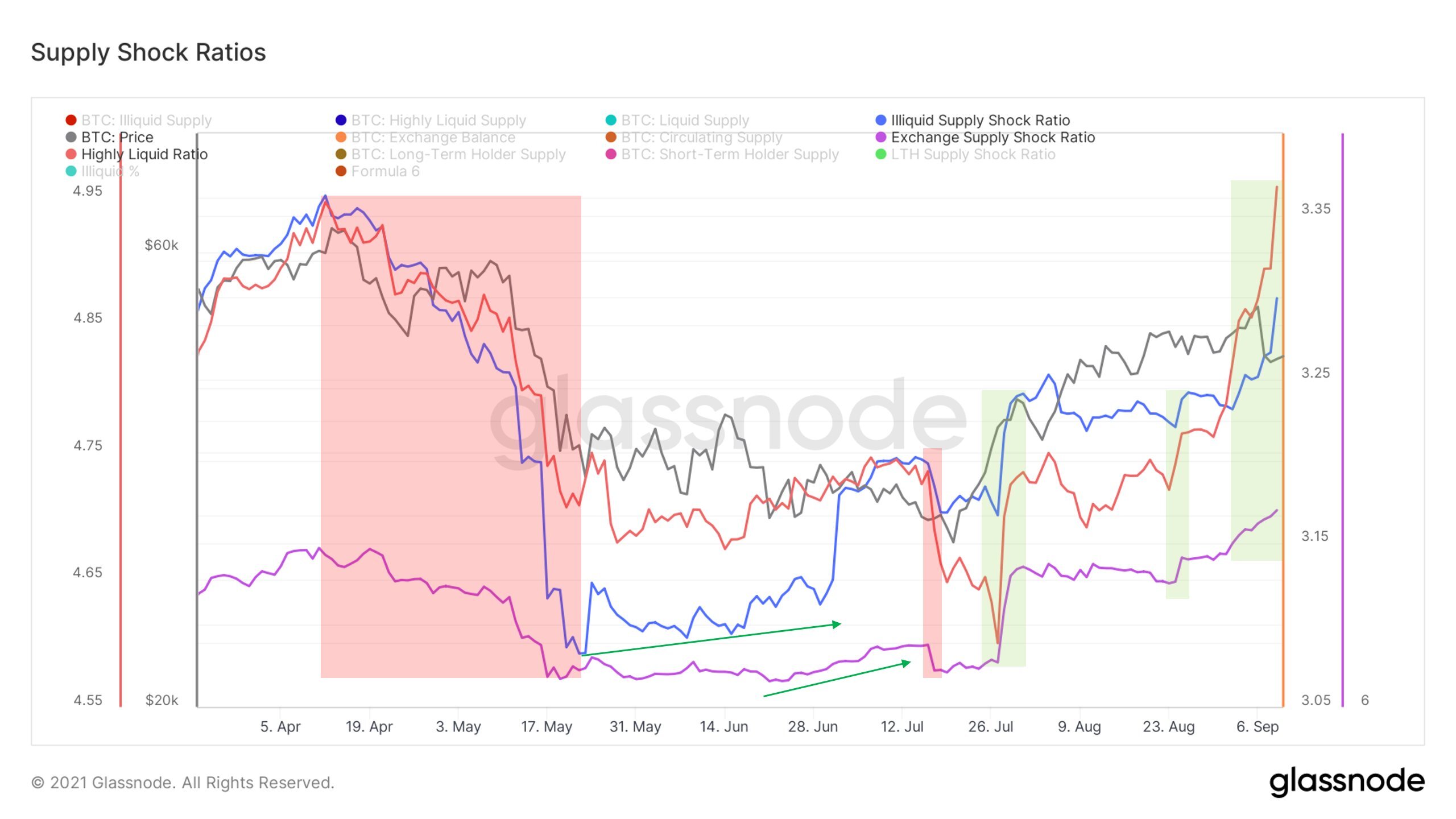

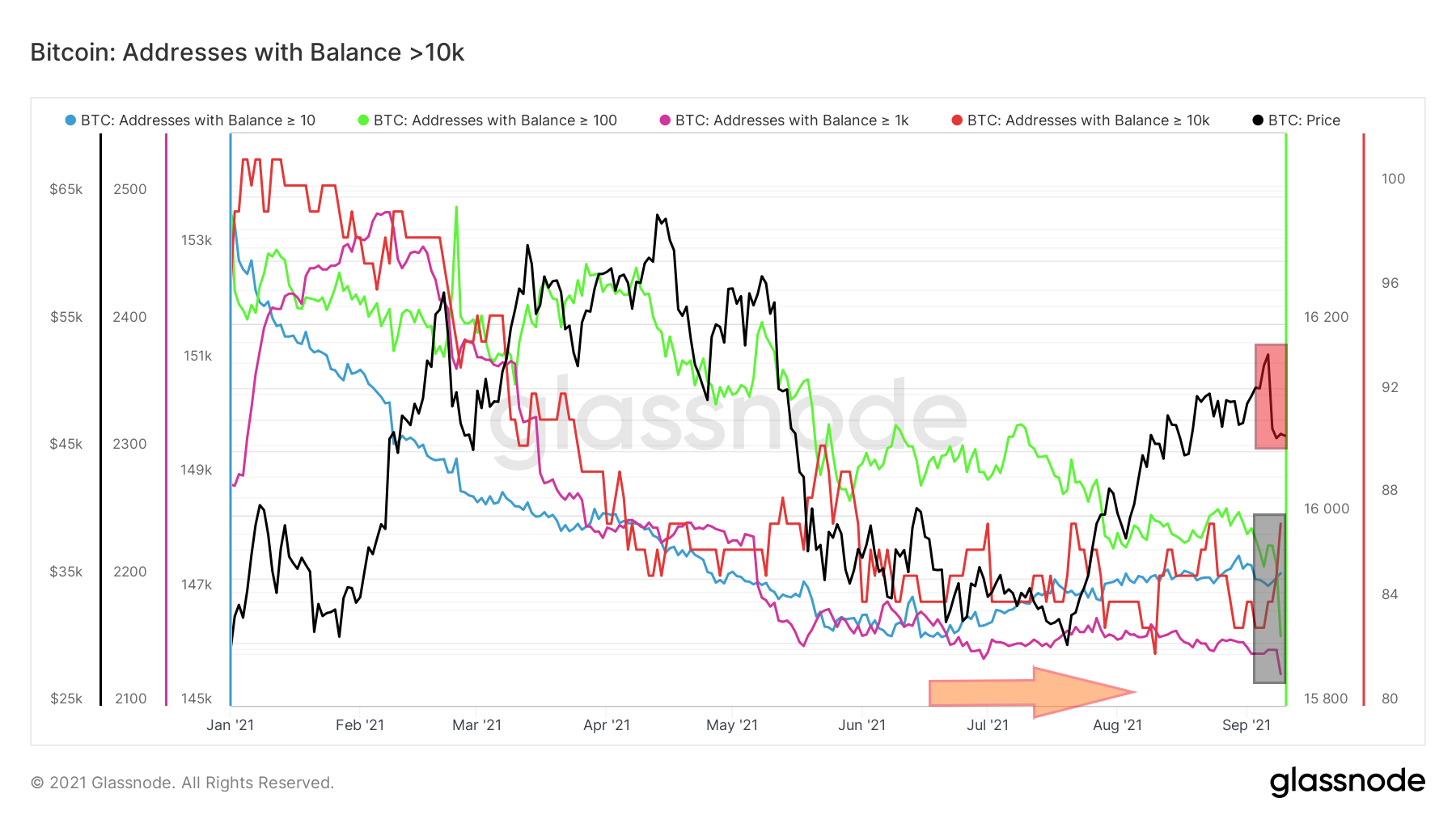
0 Comments